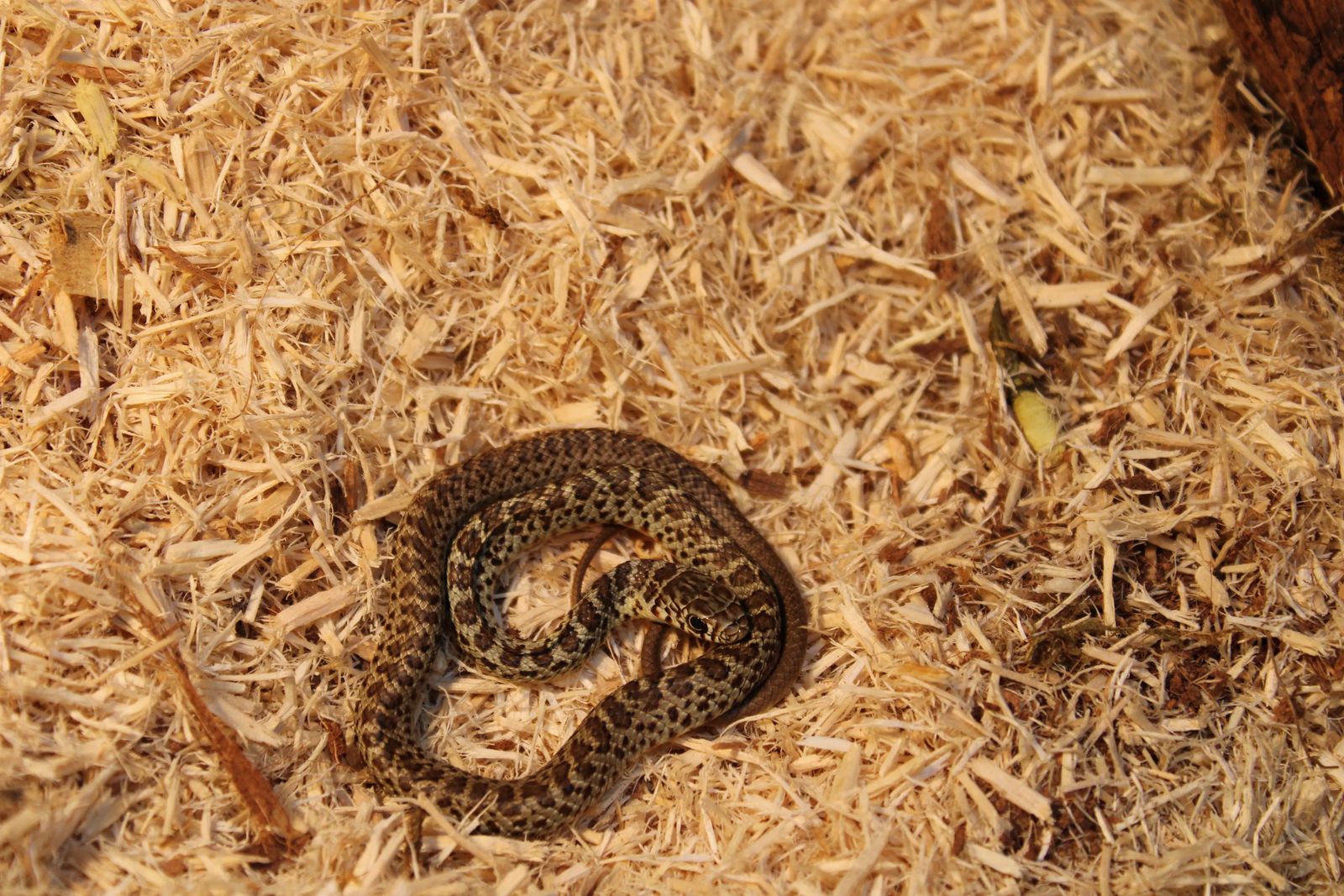
NORTH AMERICAN RACER
Coluber constrictor
North American racers are also referred to as yellow-bellied racers, eastern racers, and or green racers. They can be found throughout most of the United States except the Rocky Mountain range, the American Southwest, and other high-elevated areas. Although they are very slender, they can average up to two feet long, with the longest racer reaching up to six feet long. As juvenile snakes, they will appear to have more brown blotches on their back and brown dots along their sides. Whereas adults are typically a more greenish-blue color with a yellow underside. Compared to other snakes, racers have much larger eyes that can come across as a bit more friendly. Although this species is considered a pest species by humans, they serve important roles in their ecosystem by controlling the population of insects and small mammals. Snakes like racers which are nonvenomous help keep the populations of venomous snakes because they eat and rely on the same resources therefore are in direct competition with each other.
OUR RESIDENT
Indy, Gender Unknown – Hatched in September 2022
Indy was found on the ground outside as a hatchling in October 2022 and is now in the indoor education building near the gift shop. Indy can at times be seen trying to climb up the walls of their habitat, and being a snake can be seen falling due to their lack of arms and legs to catch, but don’t worry Indy always gets up and tries again. If you can’t see Indy, it is most likely because they are under one of their hides as that’s where they like to go after a larger meal.
You can get to know Indy better and meet them in person through our programs scheduled through the education department!
TAXONOMY
- Kingdom: Animalia
- Phylum: Chordata
- Class: Reptilia
- Order: Squamata
- Family: Colubridae
- Genus: Coluber
- Species: Coluber constrictor
ANIMAL FACTS
Carnivore: mainly eat insects, frogs, birds, reptiles, eggs, and small rodents (and eat infrequently)
Population Status (according to IUCN): currently listed as Least Concern
Population Status (according to Montana Field Guide): currently listed as Secure
Habitat: grasslands, agricultural fields, woodlands, and suburban areas
Activity: diurnal- mainly active during the day
